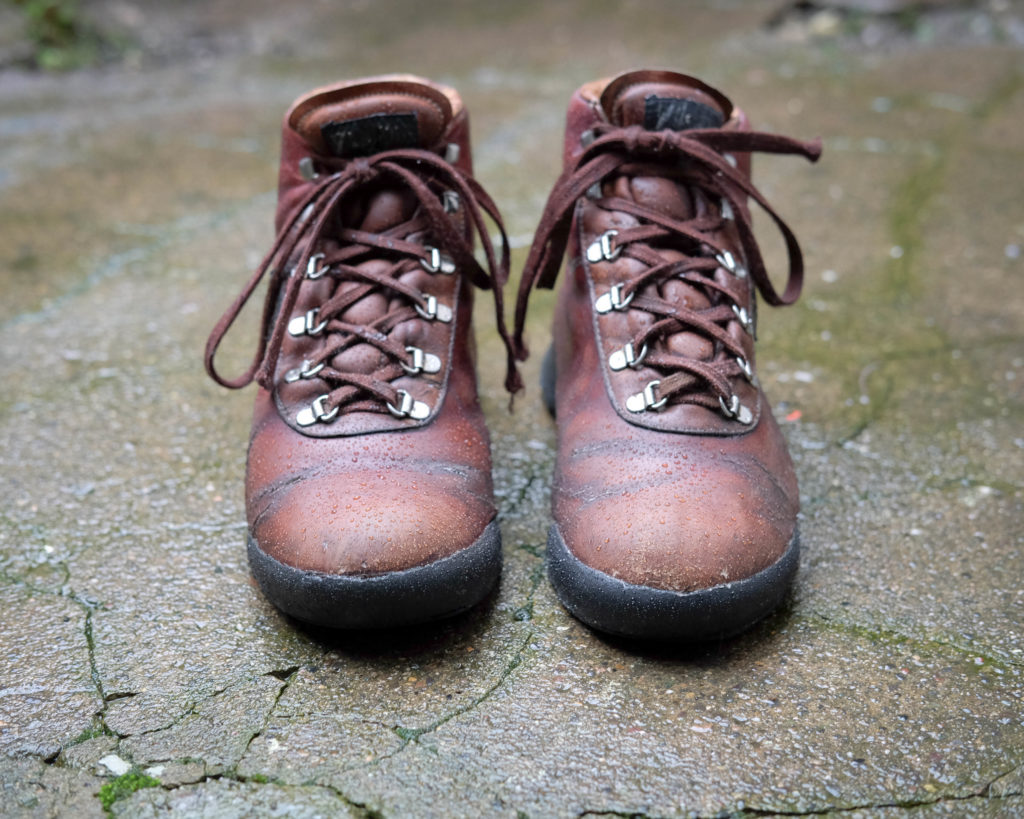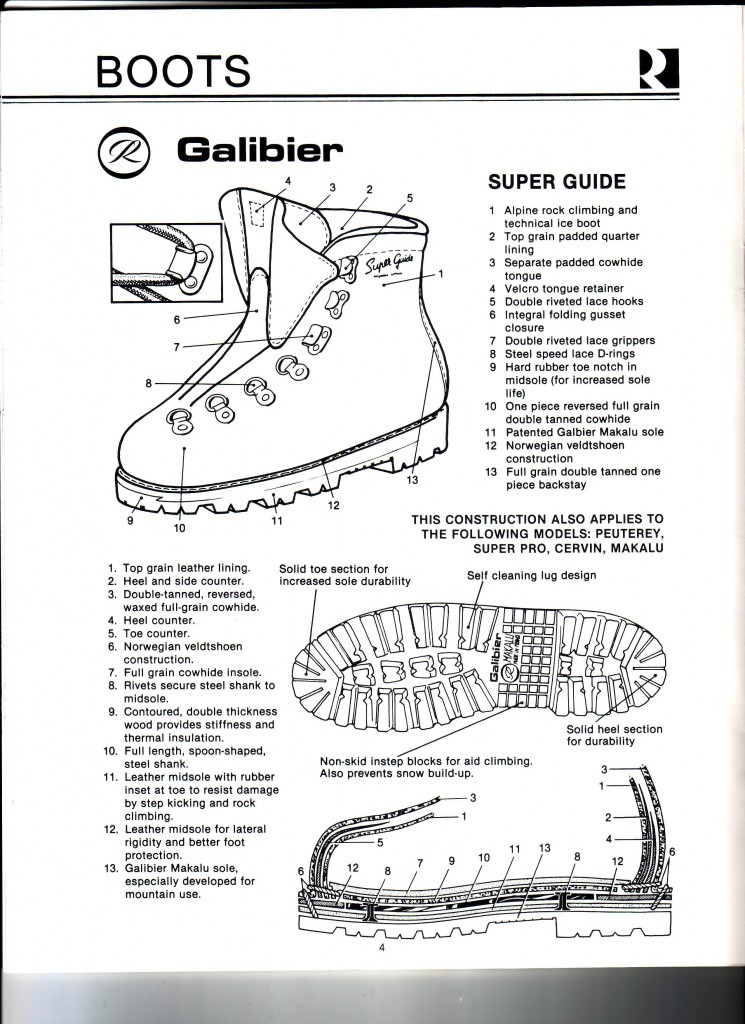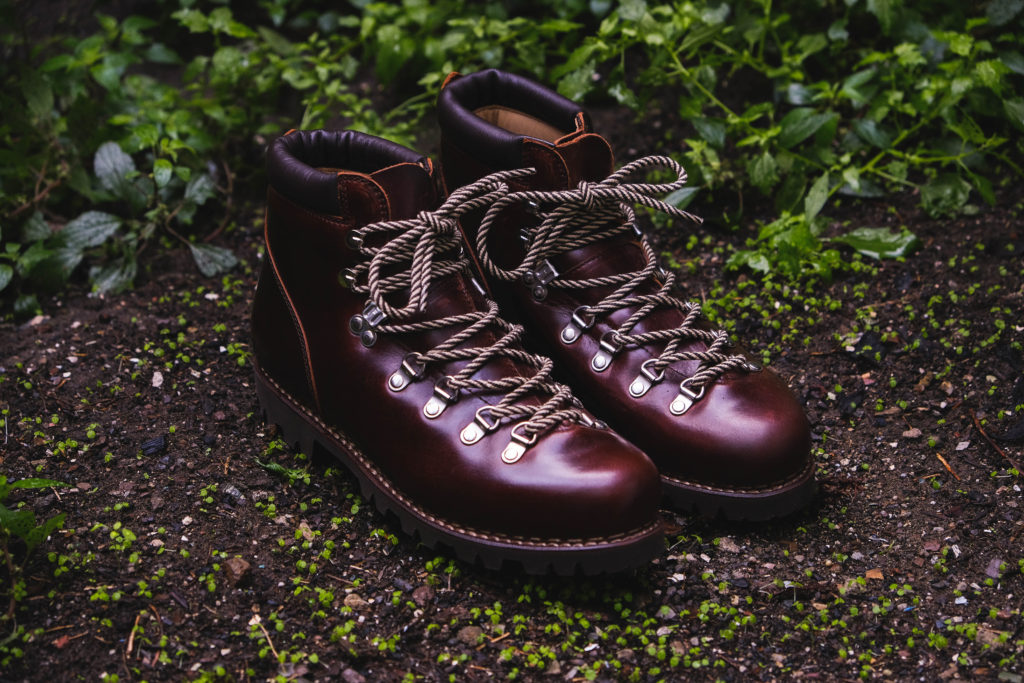Boots are one of those few pieces of menswear that we can all appreciate – whether ivy prep or goth ninja, everyone can get behind a good pair of boots. And truly, there seems to be a boot for every occasion. Chelsea boots for sleek contemporary clothing, service boots for workwear, balmoral boots for the sartorial guys, and even jodphur boots when you want to look like you practice dressage on the weekends. There is one style of boot that has caught my attention in recent years – the alpine boot. Although it’s been difficult to figure out the exact history of this style (or if they’re even called alpine boots at all), I quickly fell in love with their handsome outdoorsman aesthetic. They’re perfect for when I’ll be hiking or puddle jumping but still want to look decent – something that a lot of hiking boots on the market can’t offer.
A History of Alpine Boots
Although alpine boots have been around for many years – most likely starting in northern Italy – their modern form seems to have solidified in the 1960s. This style of boot came into existence at a bit of an inflection point in the footwear market, where synthetic materials like Goretex and Vibram soles were revolutionizing how boots were made but when welted construction and real leather were still common ingredients in footwear. This combination of new and old resulted in boots that were sturdy and resole-able, but lighter and more water-resistant than ever before. Some of the groundbreaking boots that came into being during this era are still made today, though not necessarily to the same standards.
While these boots are relatively heavy compared to their modern counterparts and probably not suited for the most “legit” of backpacking and mountaineering adventures, they’re still more than enough for most hikes and are designed to take a beating. For long backpacking trips I do prefer something lighter, but for day hikes and weekends I can’t think of anything better.
What To Look For in Alpine Boots
Most of these boots follow the same basic formula – lacing with D-ring eyelets that extend most of the way down the vamp, a padded ankle, and a chunky rubber sole to provide traction. Beyond that, though, the specifics can vary. Here are things that I look for:
- Aesthetics. Let’s not kid ourselves, if I wanted a purely functional pair of lightweight hiking shoes I’d buy some trail runners. I want something that looks handsome but can also be usable on the trail.
- Welting. There’s a variety of ways that these boots are constructed, and as usual I prefer welted techniques over glued-together construction. But with that said, this is a time where the gold-standard Goodyear welt isn’t necessarily the best option (although it’s certainly not a bad option). Something like a Norwegian or Veldshoen welt will be more water resistant, allowing the boots to perform better in wet conditions.
- Tongue: this another area where a shoe can collect bonus points. A bellows tongue or similar design can offer further water resistance by keeping moisture from leaking in.
My Favorite Styles
Under $300:
Alico Tahoe: These are a great budget option. They’re made in Italy and hardly distributed in the US, but you can often find them on Sierra Trading Post for under $150 (and don’t forget about the coupons!). Stitch-down construction, Vibram soles, and Italian provenance make these a solid buy for the price. Check out the excellent review at A Fine Tooth Comb for more information.
Eddie Bauer K-6: Originally introduced in 1964, this appears to be another solid budget pick for anyone curious about the style. While I don’t have any firsthand experience with these, the specs are impressive for the current discount price of $140 – full grain leather, Goodyear welting, and a Vibram outsole.
Vasque Sundowner: This legendary boot was introduced in 1984, though the product is not quite the same as it once was. Even so, it’s still a good option if you like the design. The leather is produced by Red Wing, who also created and owns the brand. The construction has changed (along with the Italian manufacturing), but for the price you’re still getting a solid boot. Check out the picture below to see my vintage pair from the 80s.
Over $300:
Fracap M120: This bootmaker has flown under the radar for years, even though it has many things that menswear fans geek out about – customization, Goodyear welting, and Italian manufacturing. While they are available at a few retailers, you can also have them custom-made on their site. There are a myriad of leather, sole, and lace styles to choose from here, so have at it. I’m tempted to get a pair in dark brown suede with green laces and Cristy soles, just because I can. Check out their Instagram for some ideas as well. Occasionally on sale for close to $200 from End.
Danner Mountain Light: To many people, this is the gold standard of alpine boots. The Mountain Light is the evolution of the 6490 and “Danner Light” boots, both pioneers of the alpine style from the seventies. They’re still made in Portland (which I love, as a PNW native) and feature stitchdown construction, a one-piece upper, Gore-Tex lining, and a multi-layered tongue to keep your feet dry. Also available in tan.
J. Fitzpatrick Snoqualmie: A more refined take on the alpine style, Justin’s design tests the boundaries of how formal you can possibly make a hiking boot. I prefer a style that is a bit more rugged, but if you want a more city-ified version of this style, this is the one for you. Goodyear welted, made in Spain.
Paraboot Avoriaz: My personal favorite, and the pair on my feet at the top of this post. The Avoriaz is the only French pair on this list, and it is modeled after the legendary Galiber Super Guide (I’ve heard that Galiber still exists, but that it’s impossible to get outside of France. I honestly have no idea). Their Norwegian welt construction makes them highly water-resistant, and a triple tongue keeps the uppers equally dry. They’re handsome, rugged, and dangerously comfortable. You can find them in a variety of materials (like bison) and at a multitude of retailers so shop around for a discount and keep and eye out for a makeup that you like.
So there you have it – a glimpse into the boots that have been occupying my brain. Getting into another pair of alpine boots has brought my glamping dreams to fruition, and I can’t wait to wear them the next time that I hike 1.5 miles and then get drunk in the woods.



